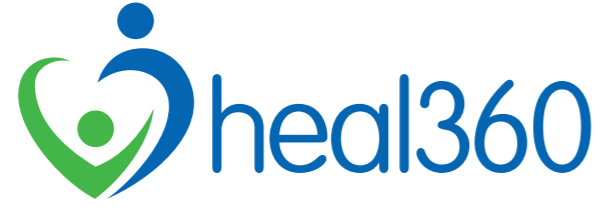Many individuals who recover from COVID-19 experience symptoms such as shortness of breath, cough, tiredness, and decreased exercise endurance. After many months of infections, many patients experience difficulty to exercise, as well as discomfort and muscular weakening.
COVID-19 can lead to inflammation in the lungs due to the infection and the immune system’s reaction to it. In severe cases, the lungs may become scarred. The scarring causes stiffness in the lungs, which can make it difficult to breathe and get oxygen to the bloodstream, resulting in long-term breathlessness and difficulty managing daily tasks.
Schedule an appointment and we will start serving you immediately.
In our bid to help as many people relieve their symptoms and better understand your condition, we are offering our Manual lymphatic Drainage Massage and Exercise program at just $150 (U.P. $240).
Here’s what you will get in this 1 hour session for just $150 (U.P. $240)*
- Consultation
- Manual Technique/ myofascial release
- Manual lymphatic therapy
- Personalized exercise program
If you are struggling to get back to your old self, do get in touch. we can help with symptoms of fatigue and rebuild endurance and strength.
Website: www.physioclinic.sg | Call: 62244178 | WhatsApp or SMS: 91510068 | Email: info@physioclinic.sg

Golf is an athletic activity enjoyed by people of all ages and skill levels. There are more than 55 million golfers around the world, and the number of participants is increasing worldwide. This is because golf is not an intense activity, it is especially suitable for older people to stay active and improve their health.
However, golfers prone to risk injury especially on the back, shoulder, wrist and hand, elbow, and knee due to unique compressive, shear, rotational, and lateral bending forces created in the lumbar region during the golf swing. Trunk hyperextension at the end of golf swing has been considered a risk factor for low back injuries by increasing spinal forces.
There are lots of potential causes and various type of injury. But total workload and practice volumes, lack of warm up, technique, equipment/environment, overused and physical condition all play a part.
Swing Mechanics Overview
Golf swing divided into setup, backswing, transition, downswing, and follow-through. Large release of power/energy during the downswing and deceleration forces during the follow-through, these phases are responsible for the majority of injuries during golf.
Analysis of muscle activity during the golf swing reveals heightened activity of the scapular stabilizers, erector spinae, abdominal obliques, and hamstrings during the backswing. The scapular stabilizers, pectoralis major, gluteus maximus, gluteus medius, vastus lateralis, biceps femoris, adductor magnus, and abdominal obliques are the most active muscles during the downswing into impact. During follow-through, the vastus lateralis, gluteus medius, abdominal obliques, adductor magnus, rotator cuff, and hamstrings all play a major role. (Erik P. Meira, 2010)
Why mobility and postural stability is important?
For golfers, lack of flexibility in the hip flexors and limitations of internal rotation can cause injuries to the low back. Research found that it is useful to stretch your trunk rotators and shoulder musculature as they are integral to swing phase.
Moreover, reduced in muscle strength and flexibility of the trunk and hip, spinal proprioception, and postural stability can contribute to the relationship between trunk motion and low back injuries. Deficient of spinal proprioception will affect normal neuromuscular control of the spine and alter the sense of body position and movement. (Edward R.LaskowskiMD, 2000)
Impairment in strength, coordination, or effective coupling of muscles in the lumbar and pelvic region can cause postural instability. (Luoto, Satu BM, 2000)
Finally, weak trunk extension and reduced spine rotation could mechanically impact spinal structures contributing to LBP and weak hip adductors can fail to stabilize the pelvis during your weight bearing. (Lephart SM, , Smoliga JM, 2007)
Seek for professional help as soon as possible if you are down with an injury. Injury has turned chronic when time goes by. As last, the prognosis for recovery is also far worse.
Contact us so we may help you return to your daily activities or sports.
Stretching refers to a movement applied by an external and/or internal force in order to increase one’s joint range of motion i.e., flexibility (Weerapong et al., 2004).
Stretching exercises help to increase the range of motion (ROM) of joints for improving performance and rehabilitation. The ability of connective and muscular tissues to change their architecture in response to stretching is important for their proper function, repair, and performance.

Furthermore, stretching is depends on the active and passive tension of the muscle, the musculo-tendinous unit (MTU), as well as the proprioceptors of the musculoskeletal system, the muscle spindles, and the Golgi tendon organs (Abdel-aziem et al., 2013). The tension created by muscle can be classified as either active or passive, with active referring to the interaction of the actin and myosin filaments of muscle, and passive to the elongation of the connective tissue beyond their resting length.
There are four stretch parameters have been identified as being important for potentially influencing the increase or decrease of flexibility of a joint: intensity, duration, frequency, and stretch position (Wyon et al., 2009).
However, why does regular stretching still doesn’t relieve my tightness?
-Firstly, it might doing the wrong stretch. The stretch you doing might not be targeted to the body part you wanted to stretch.
-Tightness of the muscles isn’t the issue in the first place.
-Muscles become worn out after prolonged period of time, leading to a sensation of tightness. (overworked muscles are getting a break).
-It’s might be the time to strengthen the muscles involved.
Our therapist will perform a thorough assessment and will develop a management plan for your condition.
Or if you have any queries, please do not hesitate to contact heal360 physioclinic on:
Website: www.physioclinic.sg | Call: 62244178 | WhatsApp or SMS: 91510068 | Email: info@physioclinic.sg
